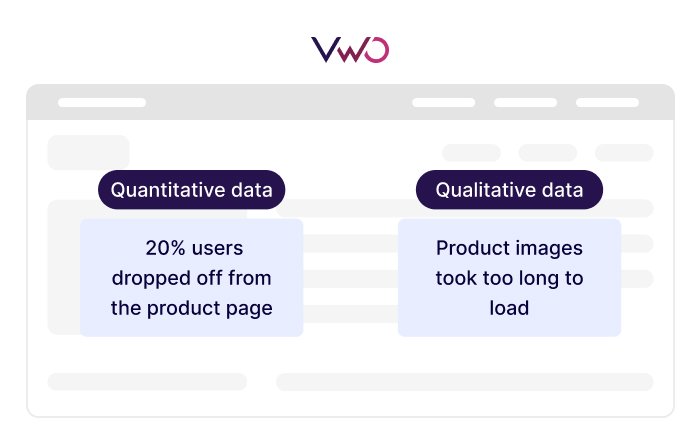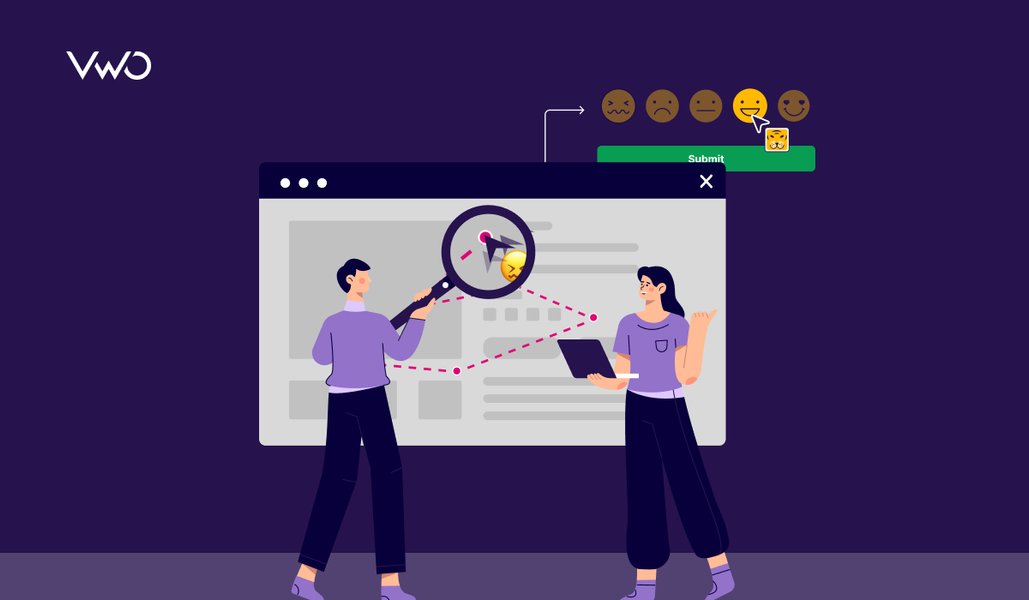CRO Perspectives by VWO brings you conversations with practitioners who are not only shaping experimentation but also building the culture, processes, and mindset shifts that make CRO inclusive, effective, and scalable.
This is our 21st post, and it features a leader who’s doing something many of us might overlook: teaching markets what CRO even means before asking them to adopt it.

Leader: April Hung
Role: Founder, Four Digital
Location: Taiwan
Why should you read the interview?
April Hung sheds light on a challenge that’s not often discussed: making people aware of CRO and experimentation in a market where the discipline is still largely unknown.
With over six years of experience spanning New Zealand and Taiwan, April understands the nuances of a mature CRO market and the challenges of introducing CRO when very few know about it.
In this interview, April discusses how working across two contrasting cultures shaped her approach, how she uses real-time on-site surveys to capture friction as it happens, and what three milestones Taiwan must hit to become a CRO powerhouse by 2035.
If you’re building experimentation programs in emerging markets or curious about how cultural context shapes testing strategy, April’s experience offers practical, grounded guidance.
New Zealand vs. Taiwan: How two different cultures shaped your CRO mindset
That constant movement between two very different cultures shaped how I think about work and problem-solving.
Taiwan’s environment is highly competitive and fast-paced.
New Zealand is the opposite. It’s consistently rated as one of the top countries for work-life balance, and I can validate that from experience.
The workplace culture there is incredibly supportive. People genuinely care about each other, and there’s a strong emphasis on not overworking.
But the most valuable part of that culture?
Companies encourage you to raise questions. To speak up. To challenge assumptions before jumping into execution.
In Taiwan, however, people are busy, moving from task to task, and there’s less space for that kind of reflective thinking.
So when I brought that mindset back with me to Taiwan, it became the foundation of how I work with clients.
My first conversation with any client always starts the same way:
- What’s the problem you’re facing right now?
- Why do you think that’s a problem?
- Tell me more about your business.
Because more often than not, what they think is the problem isn’t actually the root cause.
How does the digital maturity of Taiwan differ from that of New Zealand?

I’d say both markets are mature in their own way. Their strengths lie in different areas.
New Zealand is further ahead when it comes to strategy, experimentation, and structured testing programs.
There’s a deeper understanding of how to approach optimization systematically.
Taiwan, on the other hand, is incredibly advanced in advertising, especially automation and paid media execution. They’re experts at what they do in that space.
One major difference is how roles are structured.
In Taiwan, it’s common for one person to handle multiple responsibilities.
When I worked as a marketing manager in Taiwan, I was responsible for SEO, analytics, content marketing, and both online and offline events.
Now, that might seem like a disadvantage. And honestly, it is tiring too.
But when it comes to experimentation, it’s actually an asset.
Think about it: if a UX designer can also do data analysis, or if a data analyst knows front-end editing, that speeds up the entire experimentation process.
There’s less handoff time, fewer bottlenecks, and faster iteration.
The structure and culture already support rapid execution, so they just need to apply it to testing.
While Taiwan is still catching up in terms of CRO maturity, once businesses here start incorporating experimentation into their workflows, the impact will be significant.
Which industries in Taiwan are embracing CRO?
I wouldn’t say any specific sector in Taiwan has fully matured in CRO yet, but eCommerce businesses are definitely the most willing to try it.
A few of the bigger players are starting to adopt structured experimentation—analyzing data, forming hypotheses, running tests.
What’s more interesting to me is the trend I’m seeing with businesses that operate both offline and online.
During COVID, a lot of companies moved purely online. Now that people are traveling again and going out more, offline stores are reopening.
We’re moving back toward a bricks-and-mortar model, but with a twist. People research online, then make the purchase in-store. CRO plays a critical role in that model.
Now we need to pay even more attention to answer some critical questions, like:
- Why are people coming to the website?
- How do we retain their interest?
- How do we guide them through each step so they eventually visit the physical location?
I see businesses operating across both online and offline channels as the next major frontier for CRO.
Roadblocks that prevent teams from adopting CRO
It’s simpler than you might think: most people in Taiwan don’t know what CRO is.
That’s the first blocker.
There’s barely any information about it online, at least not in Mandarin.
That’s actually why I started offering a CRO course here. I searched for resources and realized there was almost nothing available.
The second blocker is investment hesitation.
CRO requires people to manage it, tools to run it, and a budget to support it. Without knowing what value it can bring, businesses won’t commit.
So the biggest psychological and organizational barrier isn’t resistance. It’s simply not knowing what CRO is and what it can deliver.
When people don’t understand something, they are scared to invest in it. That’s the biggest roadblock I see – not knowing the potential value CRO can bring to your business.
How do you approach and maintain a balance between qualitative and quantitative research?

Qualitative research is always interesting because there are so many methods.
I’ve tried customer interviews, which are valuable but expensive. You need a skilled interviewer, you need to recruit participants, and it’s time-consuming.
Email surveys are another common method. But they often have low response rates, and you also need a certain budget for email tools.
The method I use most often is on-site surveys.
I like them because they’re real-time. When users encounter an issue while browsing, they can submit feedback immediately.
That means you’re capturing friction as it happens, which is much better than asking users to recall it later. And it’s relatively inexpensive compared to other methods.
For quantitative support, I often compare what I’m seeing in qualitative data with behavior in GA4 and heatmaps.
For example, if I see a lot of red dots on a heatmap in a specific area, I’ll check GA4 to see if click events align with that pattern.
Or, if a website survey response mentions confusion around a specific section, I’ll look at scroll depth and exit rates to quantify the extent of that issue.
I also rely on customer satisfaction scores to understand more about user sentiment from qualitative feedback.
It’s about bridging the two types of data—they need to support each other. You can’t build a strong hypothesis with just one.
Pair different VWO capabilities to get to the bottom of why visitors struggled on a page. First, analyze heatmaps to identify rage clicks, and then review session recordings to pinpoint the exact moment when these visitors encountered friction. This combined analysis helps you spot hidden friction so you can fix it before it impacts more visitors.
A common strategic pattern behind your biggest wins
I spent time reflecting on what’s driven the strongest results in my recent work, and I noticed a clear pattern: less means more.
Whenever I design a new page or section and focus on making it cleaner—reducing clutter, cutting unnecessary information—conversions improve.
This matters because businesses often want to include everything.
They think users need to understand every detail about the product, so they list the color, material, dimensions, original price, discount, specifications—all on one page.
But what they don’t realize is that when users see that much information, they either get overwhelmed or they’re too lazy to read through it all.
The tests that have delivered the biggest strategic impact for me are the ones where I’ve stripped things back.
When I make pages visually cleaner and reduce cognitive load, people are more willing to stay, engage, and convert.
It sounds simple, but it’s consistently effective. Leaner information gets more attention.
How does mobile app optimization differ from website optimization?
When someone is already using your app, they’re not a random visitor—they’re engaged. They know your brand.
They made the conscious decision to download your app, which means they’ve already crossed a significant threshold.
So when optimizing the journeys for mobile apps like LINE or WeChat, the focus shifts.
You’re not trying to build awareness or trust from scratch. You’re asking:
- Why are they here?
- How do we keep them engaged?
- What’s the next step we want them to take?
The approach is fundamentally different from optimizing a website where users might arrive cold from search or social.
In mobile apps, brands have an existing relationship with the user. The challenge, however, is to continue nurturing it and remove any friction that prevents deeper engagement.
Managing data privacy and user consent in highly regulated regions
Data privacy is a concern across the globe, and Taiwan is no exception.
I’ve heard reports of significant reductions in usable data from GA4 due to stricter consent requirements, and that’s only going to continue.
But I don’t think there’s much we can do about it—nor should we try to bypass it.
People want their data protected, and we need to respect that.

So, we must think creatively and come up with different ways to collect data. The most important shift is toward first-party data.
- Set up a strong CRM.
- Get explicit consent when people register as members or sign up for newsletters.
- Collect information like gender, preferences, and purchase history.
These are data points that users willingly share because they see value in the relationship.
The key is transparency.
Users need to know what their data is being used for, and they need assurance that it’s protected and only used for marketing purposes—not sold or shared externally.
This is just the reality we’re operating in.
Instead of fighting it, we need to adapt and build better, more trustworthy ways to collect the data we need.
What does the core tech stack look like in emerging CRO markets like Taiwan?
GA4 is definitely the foundation. Everyone has it, and it’s also integrated into most website platforms, including Shopify, which is very popular in Taiwan.
When you build your site on Shopify, you can integrate your GA4 ID and set up event tracking directly within the platform.
GTM is also widely used for setting up and managing tracking. Heatmaps are gaining traction now.
I think businesses are starting to realize, “We actually need to see how people interact with our site.” That awareness is growing, which is a positive sign.
And then there’s CRO tools, which I’m actively encouraging people to adopt.
One of the benefits is that you don’t need coding skills to run tests anymore, which removes a major barrier for people who want to try it.
So the basic tech stack most Taiwanese companies are working with includes GA4, GTM, and heatmaps.
That’s the starting point, and from there, I’m working to introduce experimentation platforms into the mix.
How does AI fit into your day-to-day CRO work?
AI plays a big role, but mostly on the technical side—the “how,” not the “why.”
I don’t think AI has caught up yet when it comes to strategy, user psychology, or the deeper thinking required to design effective experiments.
That still requires human experience and judgment.
But where AI excels is in execution.
If I want to make a change on a website that’s more complex than just swapping a color, I’ll ask AI to generate the HTML or CSS structure for me.
I don’t need to learn how to write JavaScript or spend time coding. It provides the foundation, and I refine it.
AI and I work like partners. I think about strategy and plan the approach. AI codes it for me. It accelerates what I can do, but it doesn’t make the decisions.
3 milestones that emerging markets like Taiwan must hit to become a CRO powerhouse

If Taiwan is going to host Asia’s biggest experimentation summit by 2035, three things need to happen:
1. CRO awareness needs to be at the same level as paid advertising
Everyone knows they need to invest in Google Ads and Meta to drive traffic.
CRO needs to reach that same level of common knowledge.
Businesses must look at experimentation as an essential strategy, not optional, for driving conversions and growth.
2. People need to start using the tools
Right now, some people know what CRO is conceptually, but they’ve never actually used a testing platform.
They’ve never run an experiment.
That has to change. Knowledge without practice doesn’t create impact.
3. Local innovation needs to emerge
Once people start using experimentation tools regularly, they’ll identify limitations.
They’ll think, “This is too slow,” or “This doesn’t fit our workflow.”
And that’s when innovation happens.
That’s how AI started—people used machines, identified inefficiencies, and invented better versions. I believe the same will happen with CRO in Taiwan.
Once people are comfortable with experimentation, they’ll build something better, something tailored to this specific market.
Taiwanese professionals are highly technical and innovative. I’m confident that once they engage deeply with CRO, they’ll create something incredible.
But it all starts with step one: promoting experimentation and educating businesses on the value it brings.
Final thoughts
Building a testing culture isn’t just about running experiments—it’s about shifting how organizations think, ask questions, and make decisions.
April’s work in Taiwan is a reminder that maturity doesn’t happen overnight, and that education often matters more than tools in the early stages.
If you’re ready to bring structured experimentation into your organization, no matter where you are in your CRO journey, VWO gives you the tools and support to get started.
Schedule a demo now to get a personalized walkthrough of the platform.





















